September 2018 saw summer turn to autumn (and occasionally winter!) in this area, but with thankfully no real extremes of bad weather, apart from a couple of windy days courtesy of Storm Ali. It has become considerably cooler at dawn and dusk though and we actually had a few frosts at the end of the month and our first light dusting of snow on the Cairngorms from the 20th.
The very welcome rainfall has helped the rivers to rise up to somewhere near their normal levels for autumn, which is good news for the Atlantic Salmon on their way up to the spawning grounds.
The days are shortening noticeably now, with only around 12 hours of usable daylight , but by way of consolation, the heather is still a lovely purple in places, many trees are full of colourful berries, and the leaves and ferns are now in their attractive autumnal hues.....
I was away on the Shetlands for a short holiday, and in southern England visiting relatives and friends for a good part of the month, so my report will be shorter than usual, and will contain some general observations and pictures from previous Septembers.....
With just about all the summer visiting bird species gone by mid-month, and the winter visiting bird species only just arriving, full-day local safari bird lists dropped down to their lowest levels of the year (in the 30's), though this could be upped considerably by a trip to the nearby Moray coast, whilst mammal day lists varied between 4 and 7 species, depending on the time of our start and the number of different habitats visited, with early starts usually proving to be more fruitful...
 |
| Early autumn in a beautiful local upland glen |
To give you an idea of what you may realistically hope to see if you are planning a future September visit, I hope the following more detailed information, illustrated with photos taken at sites in and around the Cairngorms National Park by myself, my friends or my safari clients, will help....clicking on the picture enlarges it to full-screen.
Wildlife highlights included:
Local speciality/upland bird species seen regularly during the month included: Osprey (first week only), Dipper, Red Grouse, Crested Tit , Goosander and Goldeneye, we also had a couple of good sightings of Golden Eagle and White-Tailed Eagle and a few fleeting glimpses of Crossbills.....Ptarmigan and Snow Bunting were both reported on local mountain tops, though suitable days were rare, and I did not venture up myself this month, sadly, Black Grouse and Capercaillie were not seen at all this month, though this is not unusual away from late winter/springtime....
Mammal species seen regularly included: Red Squirrel, Red Deer, Reindeer, Roe Deer, Mountain Goat , Brown Hare and Rabbit......with just a few brief glimpses of Mountain Hare, Stoat and Bank Vole...and one very rare daytime sighting of an Otter on a local loch on the 21st...
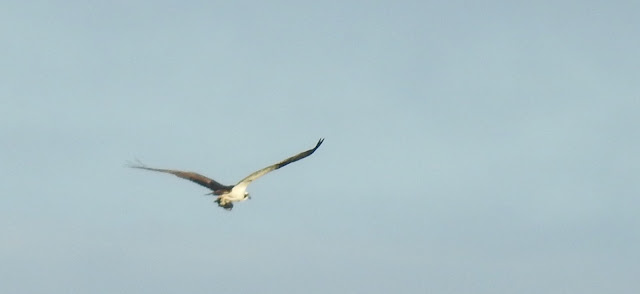 |
| Osprey |
A few of our local juvenile
Ospreys lingered around their now redundant nest sites and local lochs and rivers for the first week of the month, giving us our last chance to admire these attractive and impressive raptors and their fishing skills, until they return in the spring. It always amazes me to think that these birds will attempt to undertake a 5,000 odd mile migration unassisted by their parents at the age of around 3 months!!
 |
| Red Grouse |
Our
Red Grouse on local upland moors, mostly still in family groups, continued to entertain my safari clients, but with it still being shooting season though, they - unsurprisingly - seem a little wary of humans...but by using my vehicle as a mobile hide, we were often able to get some decent views and even a few photographic opportunities...
 |
| Crested Tit (left bird) |
Crested Tit is always high on my safari clients 'wish-lists', with it being a UK rarity and Speyside speciality, and although they are now mainly to be found in mixed flocks roaming around the Caledonian pine forests, we also managed to get some decent views of them at my favourite feeding stations, especially soon after first light on the colder mornings...
Still in the forests, Crossbills sightings were (again!) usually of the rather frustrating 'fly-over' variety, with them only being identified by their characteristic 'jip' 'jip' calls as they flew overhead between different parts of the forests...so sadly, there were no photo opportunities this month...
 |
| Dipper |
The
Dippers on our local rivers began to be seen a little more regularly, and they even appeared to be getting a little territorial, with some dawn singing being heard, and aggressive behaviour being witnessed near to prime nest sites, especially soon after first light...
 |
| Sparrowhawk (female) |
 |
| Common Buzzard |
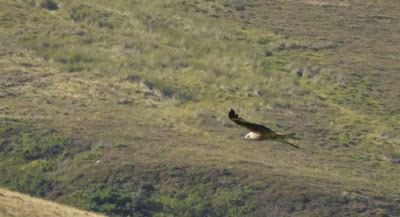 |
Red Kite
|
Golden Eagles and
White-Tailed Eagles are more commonly seen on my safaris during the shorter days of autumn and winter, when they have less hours of daylight in which to hunt, and all of the family are active, but we actually had a pretty good 'strike-rate' this month, with a favourite upland glen providing decent sightings on a number of occasions.
In fact, raptors in general seemed to be pretty active , with us seeing Red Kite, Common Buzzard, Peregrine, Sparrowhawk and Kestrel regularly as well...
Goldeneyes only breed in the UK in northern Scotland, and their numbers have increased greatly in recent years, mainly due to the RSPB providing nest boxes on trees around many local lochs, and we again got to see many large families of these very attractive little ducks this month...
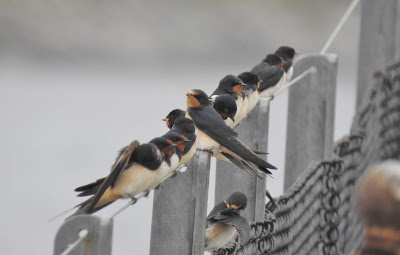 |
| Barn Swallows grouping up before flying south |
Other good birds seen or reported locally this month included: Wheatear (early in the month), Cattle Egret, Ruff, Black-Tailed Godwits, Golden Pheasants (though their origin may be 'suspect') and a presumably storm blown Manx Shearwater....
Birders prepared to travel away from Speyside a little this month, especially to coastal reserves on the Moray coast or Aberdeenshire would have noticed plenty of incoming waders and wildfowl and a good influx of 'grey' Geese throughout... and the first Whooper Swans later in the month, and a little further north at Dornoch, a very obliging Hoopoe showed well for several days...
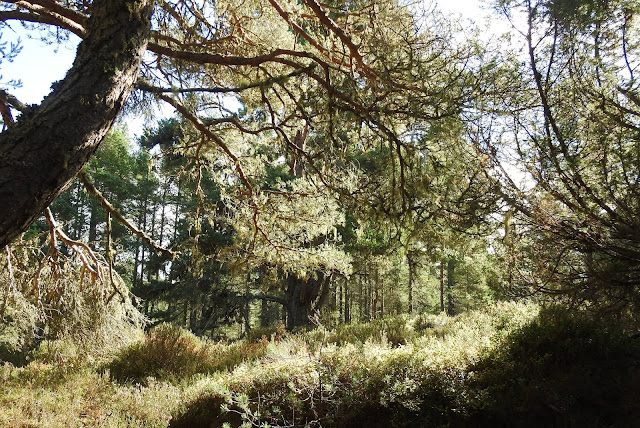 |
| Autumn in the Abernethy Forest |
September 2018 mammal sightings...
 |
| Red Squirrel |
As I mentioned last month, with the summer visiting local speciality birds departing this area, mammals become more of a focus on my safaris, and we were fortunate to see a good variety again this month. The 'mammal of the day' award was invariably won by the cute and ever popular
Red Squirrel - with many of my safari clients , especially those from the other side of the Atlantic, seeing these very characterful and attractive 'Highland speciality' animals for the first time..
 |
| Red Deer hinds |
Although all seems quiet so far this year, the very end of September usually sees the start of the
Red Deer rut, with the stags beginning to 'check-out' and assemble their 'harems' of hinds, sharpen up the tips of their antlers on rocks and trees, and partake in a little light 'sparring' with likely rivals, often accompanied by a tremendous 'roaring', which echoes round the glens... a marvelously atmospheric spectacle....
Still up in the glens, our Mountain Hares, though still in their browny-grey summer coats are gradually turning whiter from their feet upwards as autumn progresses, in preparation for the snow to come, though actual sightings of them were not as frequent, or as good as I would have liked... but that is not unusual outside of the winter months..
 |
| Feral Mountain Goat |
Our local
Mountain Goats however, were a little more obliging...with plenty of decent views of large family groups being enjoyed..
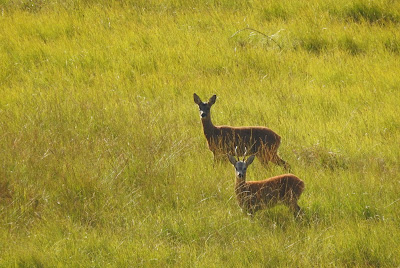 |
| Roe Deer |
Although not as physically impressive as their larger Red cousins, Roe Deer are probably more often described as cute, but they always prove popular with my safari clients, and we were fortunate enough to see them on several occasions this month, especially soon after dawn, or in remote, quiet areas...
So, to sum up, similarly to August, although in all honesty it's probably not the best month for the hard-core birder or 'twitcher' to visit, September in the Cairngorms National Park would still appear to have plenty to offer the more casual or beginner nature-watcher or those looking for a less intense or 'taster' wildlife safari experience, with the chance of a 'rarity' turning up, less tourists around and no early starts needed, in arguably, one of the most colourfully scenic months of the year....
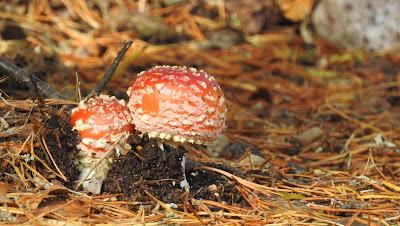 |
| Fly Agaric |
If you think you know someone who may enjoy a taste of what I do, why not treat them to a safari gift certificate. They make a thoughtful and imaginative present, are available for any amount and are valid at any time within a year from date of purchase....






